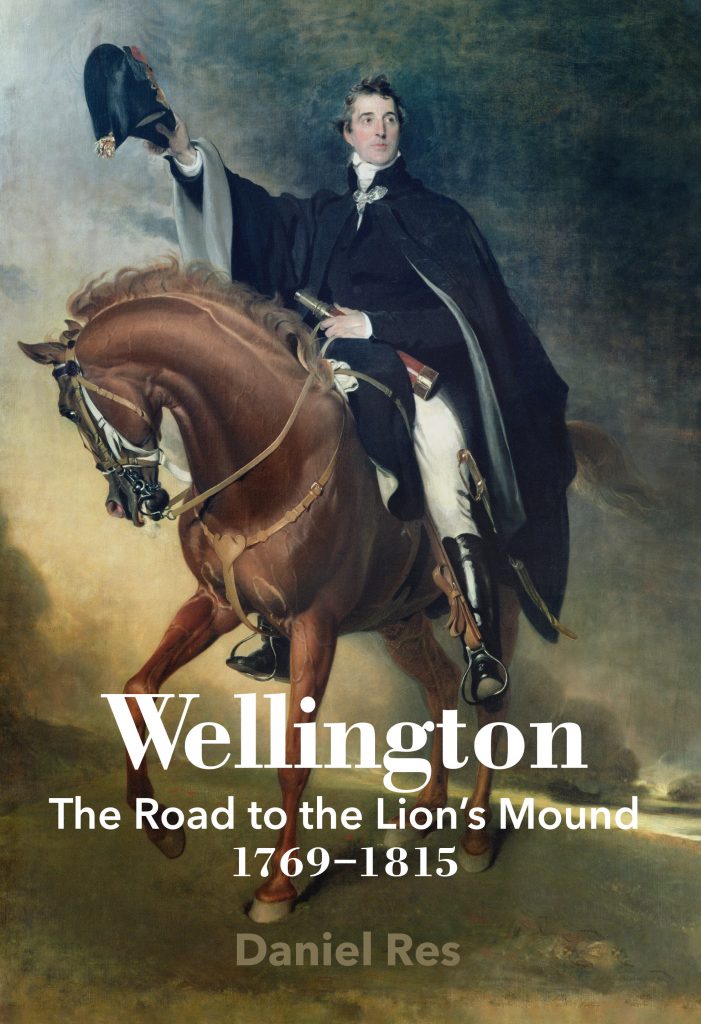Book Synopsis

Wellington – The Road to the Lion’s Mound 1769-1815 is the first volume of the story of the 1st Duke of Wellington, the man who defeated Napoleon at Waterloo and became a celebrated hero not only in Britain and Europe, but throughout the world.
Daniel Res tells the gripping tale of Wellington’s exploits, giving the book an almost novel-like readability. In it we discover the story of Wellington’s youth in Ireland, his shaky beginnings in politics and the army, his first military success in India and his crucial engagements with Napoleonic France on the Iberian Peninsula as he fights his way from there to the south of France in 1814 – all events which culminate in the Battle of Waterloo the following year. Res presents Wellington not only as an ingenious commander, but also as a sensitive man, one often shaken by the realities and horrors of war. Wellington is revealed to be an excellent horseman, a passionate reader, a gentleman, an impeccable organizer, perfectionist and workaholic, as well as being a Conservative politician with a notably British sense of humour. The author also recounts something of Wellington’s wooing of and marriage to Catherine ‘Kitty’ Pakenham, a story likened by contemporaries to Odysseus and Penelope. This provides the reader with insight into Wellington’s development from a ‘dreamy, idle and shy lad’, an often lovelorn and unrestrained youth, to a man of principle with strong personal convictions and values. The book’s title – Wellington – The Road to the Lion’s Mound 1769-1815 – was inspired by the monument that today stands on the battlefield of Waterloo and symbolizes the Duke’s personal journey.
From a scholarly perspective, Wellington – The Road to the Lion’s Mound 1769-1815 offers up an interesting hypothesis concerning the creation of the Lines of Torres Vedras, and discusses in detail the connection between Wellington’s campaigns and the activities of his Intelligence Service, casting fresh light on many of the Duke’s crucial decisions. However, Res’s primary contribution to the subject as a historian operating outside the Anglosphere is the addition of a richly detailed Central European context to the topic as well as new sources from the Czech and German languages. For instance, Res points to the rather surprising fact that Wellington did not consider Napoleon to be the best commander of his era, but rather the Austrian commander Archduke Charles, who was also the first man to defeat Napoleon in the field of battle. In the final chapter, Res provides an analysis of Anglo-Austrian relations in the Napoleonic Era. Here we encounter Wellington’s correspondence with a member of the Bohemian nobility, Marshal Karl Philipp of Schwarzenberg, a figure who led the allied troops to victory over Napoleon at Leipzig. The book also tells the remarkable tale of the ‘Black Brunswickers’, who banded together in Náchod, Czech Republic and fought their way through to join Wellington’s forces in Portugal. Rich in colour and texture, as well as supported by a wealth of illustrations, Wellington – The Road to the Lion’s Mound 1769-1815 seeks to be a useful new addition to the plethora of books about one of history’s most remarkable commanders.